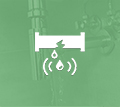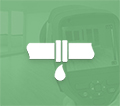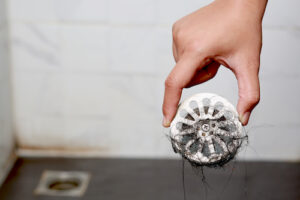Preventing and Cleaning Drain Clogs In California
Your plumbing system will last longer if you know how to prevent clogged drains. You’ll also save money by not needing to hire a plumber after you learn how to unclog a drain.
Plumbing problems with clogged drains are frequent, especially in the summer. You can save money by learning how to unclog a drain on a professional visit.
How To Stop Your Home Drains From Clogging
Making as little use of drains as possible is the best way to keep them clear.
- You shouldn’t pour grease, food scraps, or coffee grounds down the sink.
- Use the trash or compost pile instead of the garbage disposal for leftover food.
- Grease in a sealable container should be filled halfway. Once it has cooled, throw it away or take it to a recycling center.
- Keep soap scum and hair out of the bathroom sink’s drains. Use a mesh screen or perforated hair catcher to cover your tub and shower drain. In either case, the water will pass through and collect the hair.
- Stainless steel, silicone, or a combination of the two materials can be used to create a hair catcher for the shower drain. To stop hair from clogging the drain, another choice is to swap out the shower or tub stopper for one with a built-in screen.
- Before taking a bath or shower, brush your hair.
- By using this technique, stray hair is removed from the shower drain and is kept from clogging it. If you have to wash your dog in the tub or shower, put a washcloth over the drain. A typical shower drain hair catcher can become clogged by a dog’s amount of hair loss during a bath.
- Take care when flushing objects. Toilets are designed to hold both toilet paper and human waste. Flushing dense, sticky substances can cause clogs.
- Dental floss, feminine hygiene products, and other household waste should go in the trash instead.
How to Fix Common Issues Without a Plumber
Check the drain plug. If you discover hair or other debris, take the drain stopper apart, clean it, and then put it back together.
Use the plunger to plunge. Push in and out to force water up and down the pipes after plunging the plunger bell into the drain to seal the edges. Run at least two inches of water down the drain before using the plunger.
After using a plunger to unclog the drain, a plumbing snake will be needed (also called auger). Twist the snake around corners as you push it down the drain. The corkscrew point pulls hair and other obstructions out of the way by grabbing them.
Discover your P-trap. Your kitchen and bathroom sinks’ U-shaped drainpipe, which you can open to check for obstructions or insert a plumbing snake into. Install a bucket underneath the trap to collect water and debris. Try plunging or snaking through the tub drain first because it’s challenging to access the P-trap underneath your tub. Remove the overflow plate and stopper from the tub drain if your bathtub is clogged. Cover the overflow plate with plastic and a damp sponge to create a solid seal. The tub drain needs to be plunged after that. If plunging doesn’t clear the clogged drain, insert the snake through the overflow plate and work it past the P-trap. Remove the tub P-trap as the last option.
To clear your shower drain, try a cheap device from your closet. Grab a hair obstruction with a straightened wire coat hanger’s bent tip by removing the drain stopper. Plunge the obstruction out of the way or move it closer to the surface where you can reach it. If diving doesn’t work, use the snake. You could also clear the shower drain of organic waste like hair using a natural method. One cup of vinegar and one cup of baking soda should be poured down the drain. Pour a kettle of hot (not boiling) water down the drain after a few minutes of bubbling and foaming. Give the mixture a few hours to settle. Repeat the procedure if your drain isn’t clear after doing so.
Maintaining Your Drains
Drains should be cleaned once a week. Before putting it back in place, remove the pop-up stopper from your bathroom sink, clean the drain, and rinse it. Your shower or tub drain should be cleaned with a bent wire or a hair-catching brush after you remove the drain stopper.
It is advised to clean the drains once a week. Drain the hot water from your tub after filling it. Pour hot water down the drain after each shower.
Give your tub drain a thorough cleaning once per month. Remove the overflow plate and lift the pop-up assembly to gain access to the spring or rocker arm. Remove any hair or other debris and give the pop-up assembly a thorough rinse before replacing it.
Use a bacterial drain cleaner to clean your drains once a month. They won’t damage your pipes, in contrast to chemical drain cleaners. Avoiding blockages in the shower, tub, and sink is the simplest way to keep drains clear.
Don’t worry if you encounter a clog that you are unable to clear; 1st Choice Plumbing, Flood & Restoration is available to assist you with the grunt work. Dial 866-437-0205 to reach us. We’ll be delighted to step in and help.










